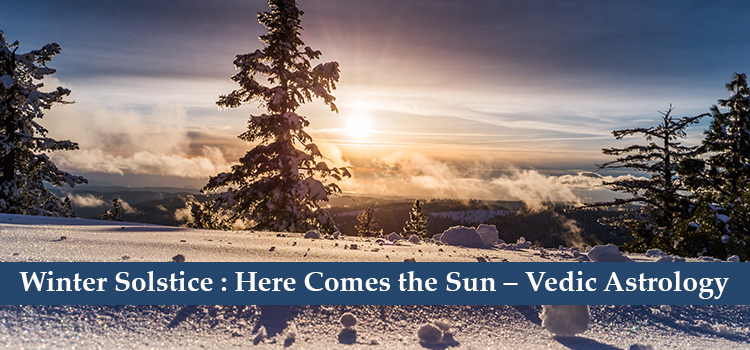When the Earth reaches its maximum tilt away from the Sun, such an event is known as the winter solstice. This happens once in both hemispheres, Northern and Southern. When this happens in the Northern hemisphere, the day becomes the shortest of year, and the night becomes the longest. In the sky, it appears as if Sun has gone far away from us.
The winter solstice happens during the winter season of the hemisphere; in the Northern Hemisphere, this day usually happens on 21st or 22nd December. This event is also known as the beginning of winter or the extreme of winter.
Winter Solstice in Vedic Terms
In Vedic terms, the vedic winter solstice is known as Uttarayan, during which the Sun enters the Northern hemisphere and stays there for six months. According to Hinduism, Uttarayan is an important period because this six months-long duration is considered the day of the Devas or God. Generally, it is believed that one day of Devas is six months long, and the night is also six months long.
So the winter solstice in India marks the beginning of Uttarayan and the Sun’s journey in the Northern hemisphere. The Gods wake up during this period, and hence all the auspicious works take place in Hinduism; it includes marriage ceremonies.
Marriage season begins in India after Uttarayan only and goes on till the Sun enters the Southern hemisphere. This is because when the Sun is in the Southern hemisphere, it is considered the night of Devas, and hence they sleep for six months until the Sun again enters the Northern hemisphere, and the cycle goes on.
The period of the winter solstice is also considered the rebirth of the Sun when it rises again after being in the dark or ground zero. This also signifies the cycle of life and death, the cycle of rebirth, and our karmas that go on for an infinite level.
Sunlight is the most sacred in any religion; Sun is the keeper of the Universe; it is the gravitational force that keeps us intact. It is Sun’s power that makes day and night and is responsible for seasons. Without Sun, there is no existence of life; hence, Hindus worship Sun like their God.
In Vedic Astrology, the Uttarayan period remains from January to July, during which the Devas stay awake. This is an auspicious time that if any soul leaves Earth during Uttarayan, it receives the heavenly abode.
The Legend of Mahabharata
There was also a legend related to the Epic Mahabharata when Bhisma was attacked by Arjun in the battle. However, he wished to prolong his death and requested the Lord to let him lie alive in the bed of arrows. The entire journey of giving up his soul was indeed painful for Bhisma; however, he wanted to die only when the Uttarayan started. This is because the soul gets the heavenly abode of God when it departs from the world during Uttarayan.
Since the winter solstice is the rebirth of the Sun and the victory of light over darkness, this period is perfect for considering your New Year’s resolutions. It is also a powerful time to bring positive changes to your life and improve yourself.
This is the time that teaches us that dark happens because the light is inevitable. Only by going through pain and tests of time can we come up as more refined and better human beings. Be open to the difficulties of life, be humble, be absorbent for the wisdom and light will truly serve you.
Also, for those who live in the Southern hemisphere, summer solstice happens, which is the longest day and the shortest night.
Makar Sankranti
Makara Sankranti is one of the important events in Hinduism or India, which also marks the period of Uttarayan. Here the astrological event takes place when the Sun enters the Capricorn sign. This is also seen as the meeting of father and son where Sun is the father, and Saturn is the son since it is the ruling Lord of Capricorn.
Makar Sankranti, as indicates Uttarayan, also marks the end of the winter month and the beginning of the spring season. Hindus celebrate the day with grand enthusiasm; they take a holy dip in the river, make donations, prepare delicacies, worship God, and enjoy the day with relatives.
Interesting Fact from Neolithic Times
The solstice was an important event in historical times as well and even during Neolithic times. The solstice was used to measure the astronomical events, sowing of crops, monitoring the food reserve, and also the mating season for the animals.
In olden times, starvation was common when the winter paved the way in its initial days. Many cattle were slaughtered so they wouldn’t have to feed the animals when there was already a lack of food supply. Hence with the slaughtered cattle, people used to make plenty of meat supply going along with wine as their way of surviving the winters.


